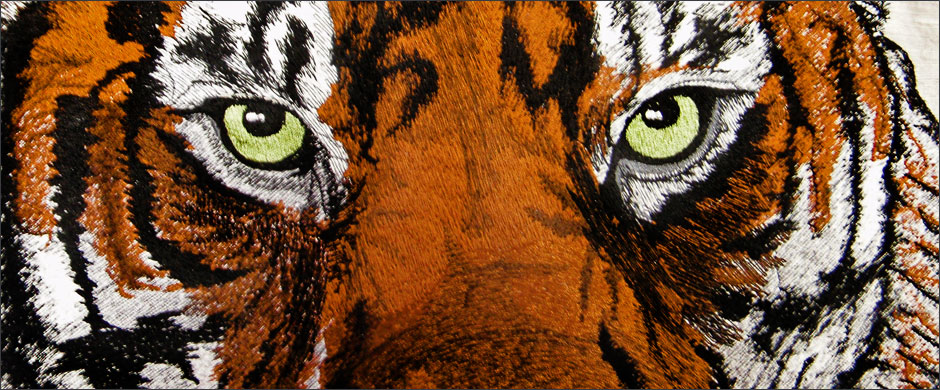Reputable Digitizing for Embroidery: Relied On by Specialists
Reputable Digitizing for Embroidery: Relied On by Specialists
Blog Article
Explore Different Kinds Of Embroidery Digitizing Strategies
Needlework digitizing has developed considerably over the years, using a myriad of methods to bring layouts to life in the digital realm. The world extends to a lot more advanced methods like photorealistic embroidery digitizing and the interesting realm of 3D embroidery digitizing.
Standard Hand Embroidery Digitizing
Conventional hand embroidery digitizing includes the process of transforming elaborate hand-stitched styles into digital layouts for maker needlework. This technique calls for skilled artisans to thoroughly evaluate the handmade style and afterwards utilize specialized software application to recreate it in an electronic layout. Each stitch, color, and information needs to be very carefully equated to make sure that the significance of the initial hand needlework is protected in the digital variation.
Among the vital obstacles of typical hand embroidery digitizing is recording the ins and outs and subtleties of the handmade layout. Digitizing for Embroidery. Artisans should have a deep understanding of various needlework methods, such as satin stitch, chain stitch, and French knots, to properly reproduce these methods in the electronic world. In addition, they require to have a keen eye for information to make certain that the digital design preserves the very same degree of artistry and craftsmanship as the initial hand-stitched piece
Punching Technique
To perfectly shift from standard hand embroidery digitizing to the punching method, craftsmens must currently concentrate on transforming the intricate electronic designs right into guidelines that embroidery makers can analyze. The boxing method includes utilizing specialized software application to produce digital data that consist of commands for the needlework equipment to follow. This procedure requires a deep understanding of not simply the design itself yet likewise the capabilities and limitations of the embroidery device.

Auto-Digitizing Software Application Programs
Needlework digitizing has actually been revolutionized by the arrival of auto-digitizing software application programs, giving artisans with innovative devices to convert digital layouts into needlework maker instructions effectively. Auto-digitizing software program programs utilize formulas to assess electronic photos or vector documents and generate needlework layouts automatically. These programs enable fast and accurate conversion of detailed layouts into stitch patterns, saving effort and time for embroiderers.
Among the crucial advantages of auto-digitizing software program is its easy to use user interface, making it accessible to both novices and experienced digitizers. These programs frequently consist of functions such as stitch editing devices, string shade matching, look here and the ability to sneak peek the final stitched layout. In addition, auto-digitizing software can deal with intricate designs with multiple colors and intricate details, creating top quality needlework documents appropriate for different apparel and textile projects.
While auto-digitizing software application offers comfort and performance, it is important for users to comprehend the constraints of automated digitizing. Fine-tuning and hands-on modifications may still be needed to achieve the preferred needlework high quality, particularly when handling intricate or unique layouts. By leveraging the abilities of auto-digitizing software application alongside hand-operated digitizing strategies, craftsmens can boost their embroidery digitizing procedure and develop magnificent stitched pieces.
Photorealistic Embroidery Digitizing
Utilizing advanced digital imaging techniques, accomplishing photorealistic results in embroidery digitizing has actually come to be a sought-after skill among modern craftsmens. This method includes transforming high-resolution pictures right into detailed stitch patterns that very closely resemble the original style, causing needlework pieces that show natural detail and depth.
To attain photorealistic embroidery digitizing, artisans have to possess an eager eye for information and a complete understanding of just how different stitch types and thickness can impact the last result. By meticulously mapping out each shade and shade in the picture, embroiderers can produce an electronic documents that guides the embroidery device to duplicate the nuances of the initial picture accurately.
Photorealistic embroidery digitizing is specifically popular in creating customized designs for garments, home design, and art items where capturing the significance of a photograph or art work is vital. This technique enables useful reference craftsmens to transform memories, landscapes, portraits, and elaborate art work into magnificent stitched work of arts that showcase a blend of conventional craftsmanship and advanced modern technology.
3D Embroidery Digitizing
With the advancement of digital imaging techniques in achieving photorealistic results in needlework digitizing, the expedition of 'D Needlework Digitizing' uses a new dimension to the ins and outs of style replication. 'D Embroidery Digitizing' describes the three-dimensional digitizing strategy that adds deepness and appearance to needlework layouts, producing an extra sensible and visually enticing last item. This technique uses software that imitates the impact of light and shadow on the embroidery layout, enhancing its total aesthetic influence.
One of the essential advantages of 'D Embroidery Digitizing' is its ability to make styles look more lifelike and dynamic. By including deepness to the embroidery design, the last product shows up more reasonable and fascinating (Digitizing for Embroidery). Additionally, this strategy permits more imaginative liberty in style implementation, making it possible for embroiderers to try out different structures and impacts that were formerly testing to achieve
Conclusion

Report this page